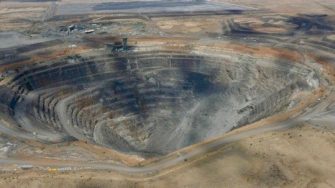
Date: Thursday, October 5, 2017
Project: Eastern Australian Waterbird Survey
Shute Harbour airport at 8am is frenetic. Light planes of all sizes vie with helicopters to shuttle tourists to and from the nearby islands and to fly them over the largest living organism on earth, the Great Barrier Reef. The small mountain cradled airport resonates with the whine of turbines, growl of piston engines and the whup-whup-whup of helicopters. It was this environment we found ourselves in as we prepared the plane for our survey of Band 10 which would have us in Mt Isa by late afternoon.
Lifting off we were able to further observe the damage of cyclone Debbie which appeared to be much less on the north side of Airlie Beach than on the south side. The main part of Airlie Beach is now a Tradies mecca as buildings are repaired.
Two major water storages were surveyed this morning, along with many small farm dams and some very dry inland rivers.
The Proserpine Dam lies behind Proserpine with its southern sector in in the band. It always attracts large numbers of Coot, Cormorant, Grey teal, Pelican, Black swan and Hardhead. It didn’t disappoint this year. Our new counter George Swann was kept very busy on the shore side as he attempted to unravel the mixed flocks.
The Dalrymple Dam is an extremely large impoundment on the headwaters of the Burdekin River. It also attracts large numbers of diverse species of water birds, especially cormorants and pelicans. As we wind our way up the Bowen and turn into the Burdekin River we always encounter a few salt water crocodiles. Each year we see them and they are now like old friends. But the resident cattle are very wary as they approach the river for a drink or crossing.
The west is dry and feral pigs are gathering around the remaining water of shrinking farm dams. Where there is some green feed near small irrigation developments Brolga congregated.
Brolga, feral pigs and striking gorges in the White Mountains kept us interested on a hot day. (photos Terry Korn)
Geologically the country is varied as we move through granite, sandstone, basalt and ultimately quartzite formations. The White Mountain area east of Hughenden is particularly spectacular, its deeply incised gorges forming the upper catchment for one of Queensland’s biggest Rivers, the Flinders. Soil fertility and production systems are closely linked to the underlying geology. Around Hughenden beautiful black soil from the basalt formations supports a large grazing industry of both sheep and cattle.
(Photo Terry Korn)
As we moved closer to Mt Isa the geology changed yet again so that the large Mt Margaret open gold mine caught our attention. And just north of Mt Isa we counted huge numbers of birds on Lake Moondarra. Coot and Hardhead were particularly abundant, making the three Red-necked avocets I spotted all the more noticeable amongst the 21 species I recorded on the lake.
